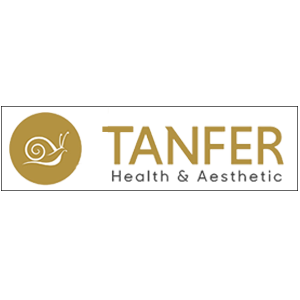
What is lumbar disc herniation?
Herniated disc occurs as a displacement of the disc structure surrounded by a solid ligament which acts as cushion between the spinal bones of the waistband. It can cause severe pain by compressing the nerve tissues around the disc which is displaced. The most common symptom is pain in the waist and legs. Depending on the nerve roots that herniated disc compresses, it is possible to see loss of strength in the muscles and drowsiness in certain skin regions. Lumbar disc herniation can be seen at any age, although it is more common in individuals aged 30-60 years. Although the lumbar disc herniation is more common in men, the frequency of occurrence in men and women is almost equal.
Treatment of lumbar disc herniation
Various pain relievers and muscle relaxants are the first choice in the treatment of hernia. Physical therapy and interventional procedures for pain are also frequently used in the treatment of lumbar disc herniation. It is recommended that patients with hernia regularly perform exercises that strengthen the waist and abdominal muscles. If the pressure on the nerve is advanced and the pain is unbearable, the herniated disc surgery can be considered as a treatment option. The patient must be evaluated in detail by a neurosurgeon before deciding whether to perform the surgery. Some tests, such as physical examination by a neurosurgeon, evaluation of the waist region MR, and if necessary EMG, are assessments that can be performed before the surgery.
Herniated disc surgery
It takes about 45-60 minutes to perform the herniated disc surgery. The success rate is about 95% in patients with lumbar disc herniation. After the surgery, patients can walk in about 6-12 hours and return to their normal life within about 7-10 days.
Patients should be thoroughly informed about the operation before the surgery, and the informed consent form of the patient should be received. Before the surgery, patients are evaluated by an anesthesiologist with blood test, lung film and ECG results. The patient who is eligible for the surgery is treated by the most appropriate surgical procedure to be selected by the neurosurgeon.
The goal is to resolve the loss of strength and numbness from the legs and waist pain through removal of the pressure from the herniated disc. Open discectomy, microdiscectomy or completely closed (endoscopic) discectomy methods are surgery options in the patients with lumbar disc herniation.
Herniated disc surgery methods
While surgical procedures such as microscopy and endoscopy can be used in the surgical treatment of lumbar disc herniation, open discectomy surgery can also be applied. The most commonly used method in the treatment of lumbar disc herniation is microdiscectomy. The method known as lasers can be preferred in patients with not very severe lumbar disc herniation.
Open herniated disc surgery
During open herniated disc surgery, the patient is anesthetized with general anesthesia and given a prone position. At the hernia level, a cut of about 3-4 cm is made and the subcutaneous tissues are passed and the bone known as the lamina is reached behind the spinal column. The connective tissue between the spinal bones and the part of the lamina is removed and the compressed nerve is reached. After that, the herniated part that compress the nerve can be removed, and the opened tissue is closed.
Lumbar Microdiscectomy
Microdiscectomy is the method where the surgeon uses microscope in the surgery. The microscope used in microdiscectomy illuminates and enlarges the tissues to be operated and makes it look clearer. In the microdiscectomy method, it is a significant advantage that both incisions are smaller and less harmful to the normal tissue while reaching the hernia. In this regard, patients after microdiscectomy surgery have a more painless and comfortable process. Patients after microdiscectomy can return to normal daily life in a shorter time than open surgery.
Full endoscopic lumbar discectomy
In a full endoscopic lumbar discectomy, a very small incision is made to the waist region from the back or side, and the area to be operated with the help of an endoscope of about 4 mm is displayed on the screen and processed. Local or epidural anesthesia is preferred for this type of surgery. Patients may be discharged on the day they are operated on.
Laser discectomy
Laser surgery without knife can be applied to early-stage lumbar disc herniation patients. Laser treatment is not performed if the connective tissue surrounding the disc between the spine bones is torn and the disc contents are displaced into the spinal canal. Anesthesia and knives are not used for laser discectomy. The patient is lied on either side and penetrated into the discoid between the vertebrae with a needle at the level of the disc, which is herniated, and the laser beam is advanced through this needle and placed in the disc.
In laser discectomy, narcosis, knives and stitches are not used. The patient is tilted as shown on the image and drug is applied to the area marked with +. So the patient does not feel pain. Then a long needle is inserted in this area till vertebrae where the hernia found. Get a laser wire through this needle. With the laser beams, the gel form in the disc is evaporated, the herniated disc is pulled backwards and the nerve pressure is removed. Success is achieved in 2 out of every 3 treated patients.
Artificial disc replacement
Another method of operation in the hernia is to replace the damaged disc with a prosthetic disc. These prosthetic discs consist of two metal plates and a flexible moving plastic piece to serve as a buffer between these two plates. In artificial disc surgery, the damaged disc is reached through a small incision at lower belly bottom and it is replaced with a prosthetic disc. The duration of the operation is approximately 2 hours. Patients can be discharged within 7-10 days, they can return to their normal lives in about 1-3 months.












BREAKOUT STAR of HEALTH TOURISM: TURKEY
Turkey investing technology in health care services and raise qualified specialist physicians to merge technology and expertise. At the same time, Turkey is one of the most important accommodation points for health tourism with world class accredited health institutions, natural treatment and thermal tourism centers, climate of four seasons.
Turkey offers easy access to health services, cheaper prices compared to developed countries, and natural and historical beauty besides correct diagnosis and treatment.
